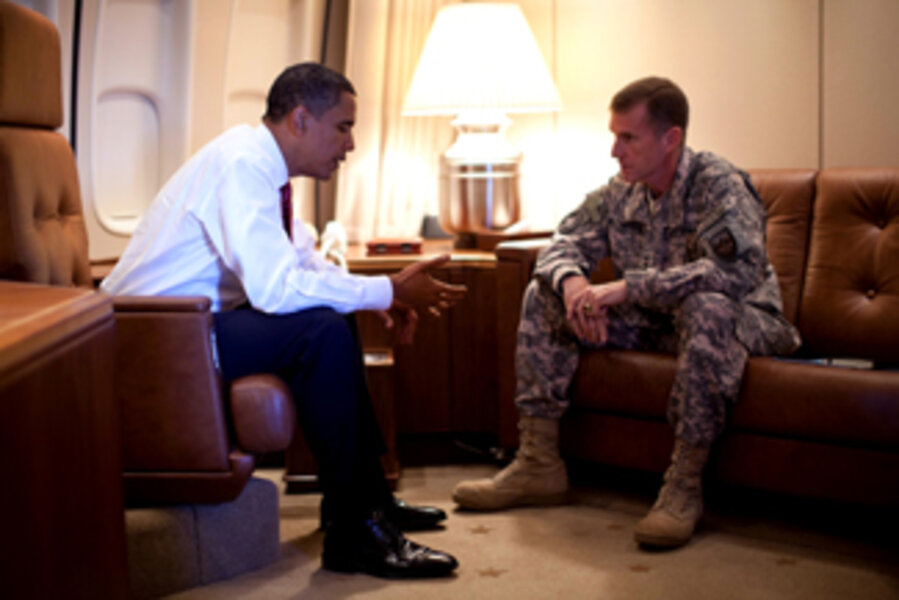Obama's Afghanistan timeline adheres to McChrystal assessment
Loading...
President Obama's decision to set a timeline on the "surge" of 30,000 new US troops into Afghanistan is consistent with a vehement assertion from Gen. Stanley McChrystal, the top US commander in Afghanistan, in his battlefield assessment.
In urgent language, McChrystal stressed the importance of time in America's Afghan venture – suggesting that the next 12 months could well determine the success or failure of the mission.
The timeline Mr. Obama announced Tuesday night appears geared to providing McChrystal with as many boots on the ground in Afghanistan as soon as is logistically possible in an effort to turn the tide of the war.
The consistency between McChrystal's assertions and Obama's words Tuesday appears to provide a military rationale for the timeline, which has been criticized as a purely political ploy made with the 2012 elections in mind.
The timeline
Obama's timeline involves deploying troops to Afghanistan as soon as next month, and then beginning to scale back the surge in July 2011. That timeline essentially gives the surge 12 months at full strength in Afghanistan at the earliest possible date.
In his assessment, leaked to the press in September, McChrystal wrote:
"We face both a short- and a long-term fight ... but I believe the short-term fight will be decisive," he wrote. "Failure to gain the initiative and reverse insurgent momentum in the near-term (next 12 months) – while Afghan security capacity matures – risks an outcome where defeating the insurgency is no longer possible."
Obama appeared to reference this idea directly Tuesday – using some of McChrystal's language almost verbatim – as he announced both the surge and the timeline.
"These are the resources that we need to seize the initiative, while building the Afghan capacity that can allow for a responsible transition of our forces out of Afghanistan," Obama said.
Backing McChrystal
The decision appears to mean that McChrystal's assertion that the "next 12 months" will be crucial is a fundamental tenet of US strategy going forward: Speed is of the essence, and the sooner America can get more troops to Afghanistan, the better.
Moreover, it also appears to sanction McChrystal's prediction that a robust US response can bring the insurgency to manageable levels by July 2011.
Under this scenario, tens of thousands of US troops would remain to deal with the remnant of the insurgency – McChrystal's "long-term fight" – since only the surge will begin to end in mid-2011, not the entire mission, which stands at 68,000 US troops today.
Moreover, it's clear that both Obama and McChrystal expect to have more capable Afghan security forces on line by 2011, which could lighten the burden on remaining US forces.
A senior administration official said Tuesday that the end of the surge does not mark the end of US involvement in Afghanistan.
The timeline signifies when the US and NATO "will begin to transfer our lead responsibility ... to Afghan counterparts," said the official, who gave the teleconference briefing on condition of anonymity.
The timeline does not, however, "specify the end of that transition process, nor will [Obama] specify the pace at which it will proceed," the official added. "Those variables – pace and end – will be dictated by conditions on the ground."
----
See also:
Obama's Afghanistan speech: how it sounded to Afghans
Obama's Afghanistan speech: five key points
-----
Follow us on Twitter.





